Tactical Analysis: Hansi Flick’s managerial debut for the German National Team against Liechtenstein - originally posted on Sportslens.com
After Louis van Gaal’s outing with the Dutch national team, Hansi Flick became the second man in two days to make a return to his national team in a coaching role after a gap of seven years. In his case, though, this was the first time that he was right at the helm, having been an assistant to Joachim Löw (the man who he was now replacing) previously.
He only took on one managerial role thereafter as the majority of his time was spent as the sporting director of the DFB, but that was about as successful a stint as you will ever see as the former midfielder won it all with Bayern Munich as he completed an incredible sextuple in 2020.
The German national team job was not much easier, although his first assignment wasn’t overly daunting as he took his squad to face Liechtenstein – a side that was 173 spots below them in the FIFA rankings. A victory was very important in the context of their qualification campaign too – Die Mannschaft were three points away from group leaders Armenia and level with North Macedonia.
In terms of the XI, Flick used his trusted 4-2-3-1 formation from Bayern along with a strong number of players from the German champions too, including teenager Jamal Musiala and Leroy Sané on the wings. Behind them, Ridle Baku’s path to claiming the right-back spot for potentially a decade continued with Robin Gosens on the other side, while Thilo Kehrer got a rare run-out in defence next to Niklas Süle, and Joshua Kimmich captained the side from midfield with İlkay Gündoğan to his right. Three men currently based in London were in the line-up too – goalkeeper Bernd Leno and attackers Kai Havertz and Timo Werner.
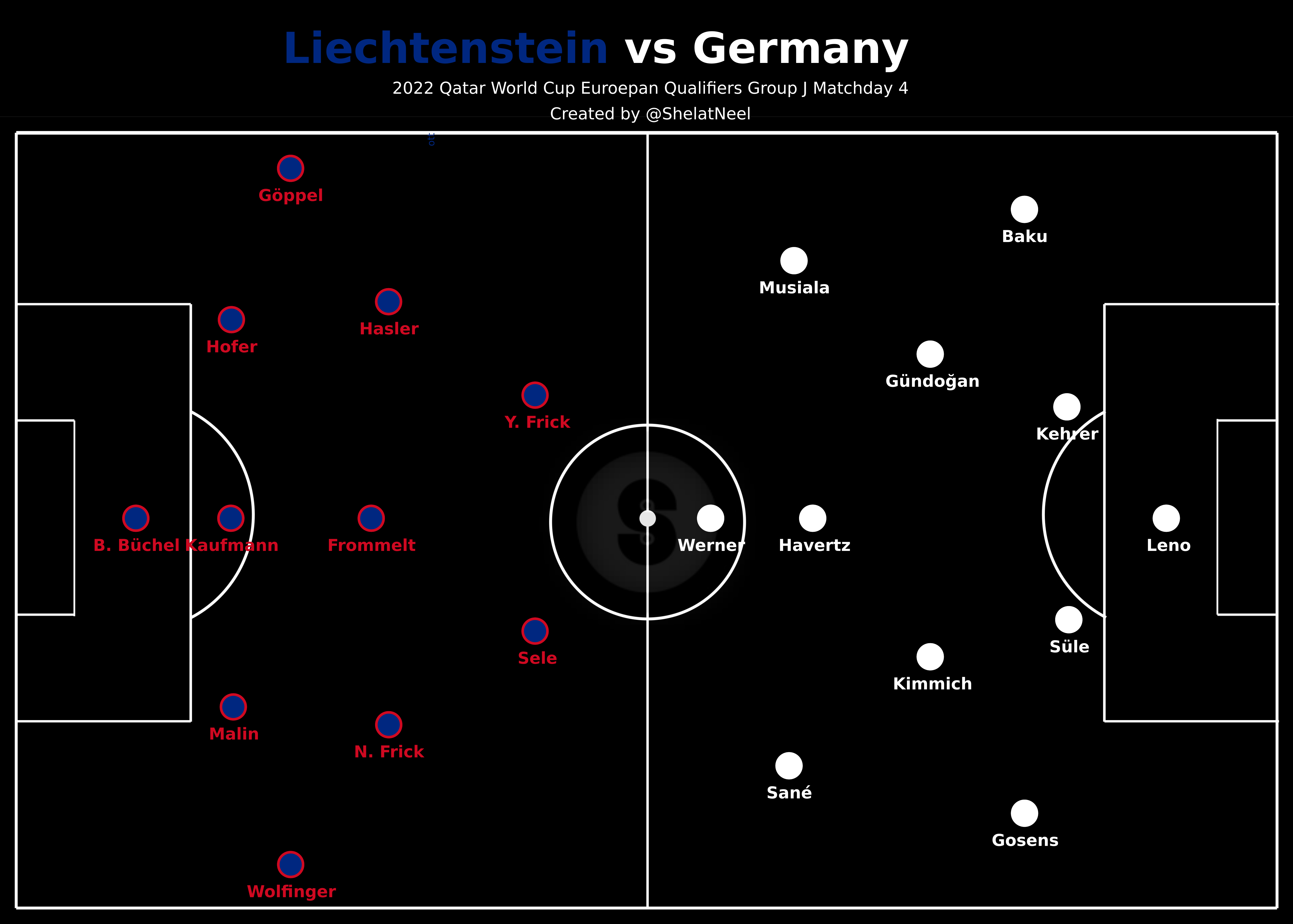
The visitors had a 4-2-3-1 in defence too, although we saw very little of it as the only thing they really had to do was contest aerial duels from goal kicks, as is the case in the instance below.
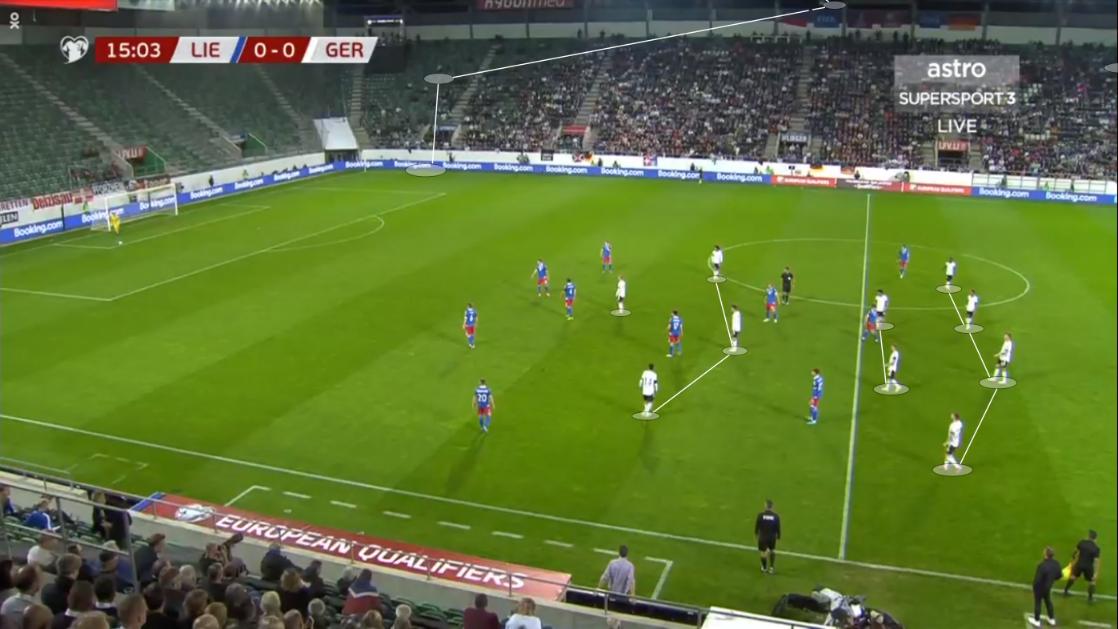
The rest of the match (over 85% of it) was spent with Flick’s side having the ball, so we can examine their system in possession a lot more closely
Liechtenstein obviously dug very deep and defended in a narrow 5-3-2, so Germany could afford to go all out in attack. In possession, therefore, their shape resembled a 2-2-6, with both full-backs pushing forward to flank the four attackers. Of course, players dropped in and out of the front line at times to help progress the ball centrally, but overall, there were six men in it. Behind them, there was a slight lopsidedness as Gündoğan stayed on the right side of the pitch while Kimmich was in the middle, leaving a bit of a hole on the left of midfield.
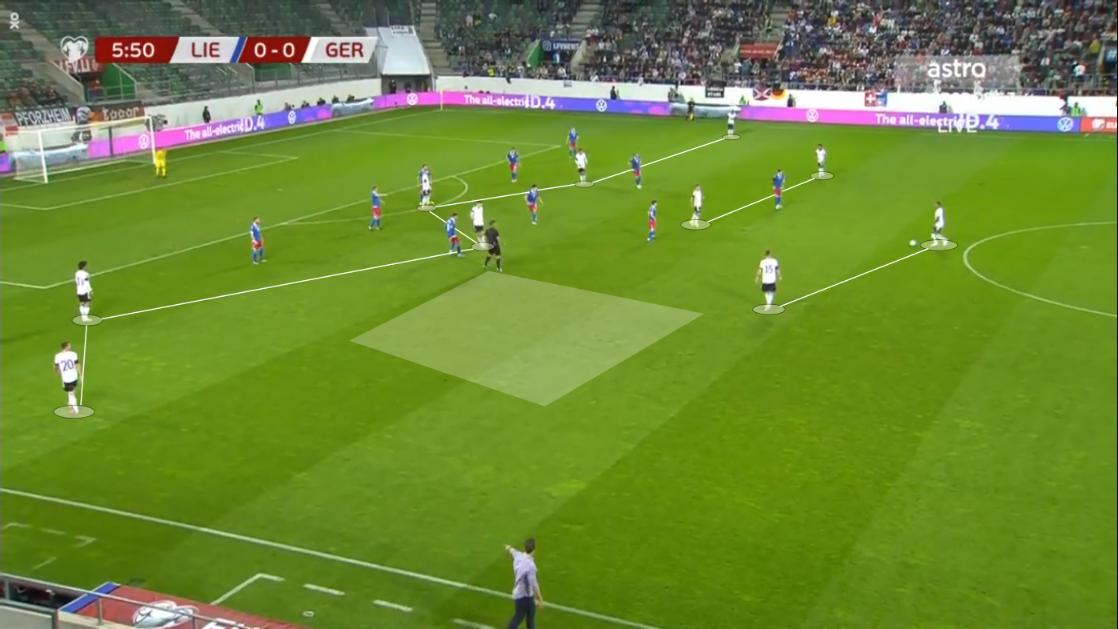
There were two ways of filling that space while getting forward through the left, and the first of those involved Süle pushing forward.
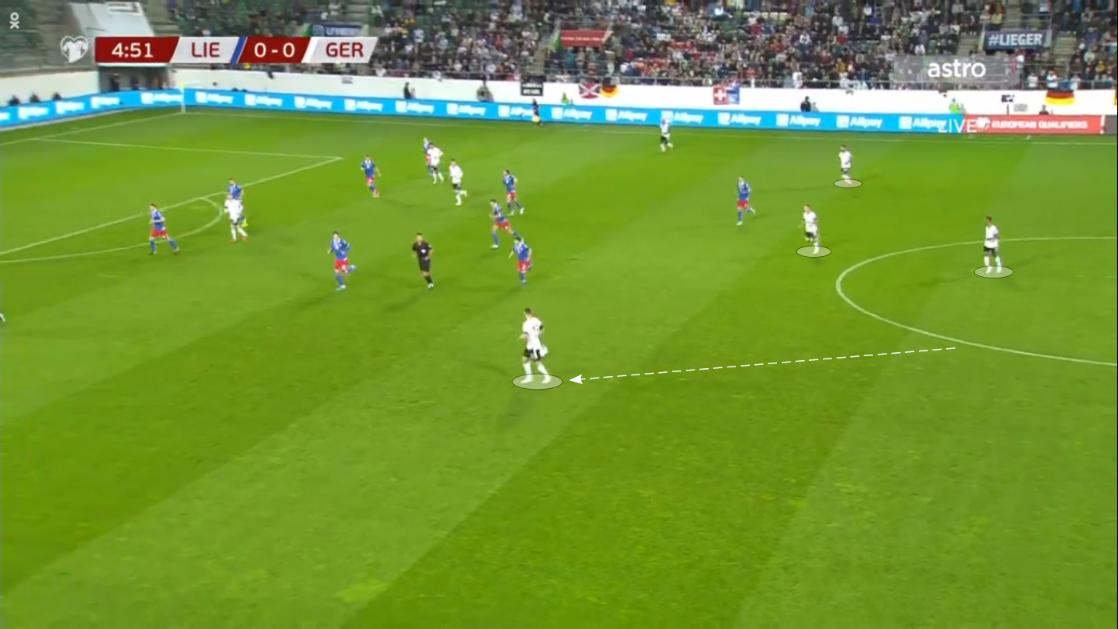
The second saw Gosens stay back and not join the front line, and in this case, Sané held the width for the attack on the left.
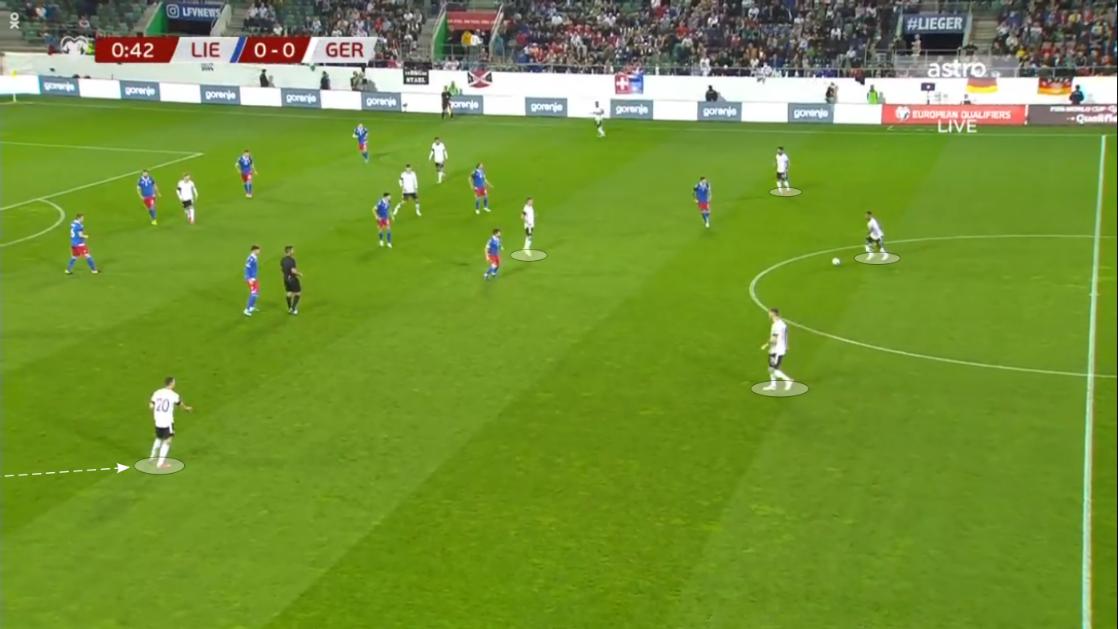
Progression through the right was a lot more straightforward, as everything simply went through Gündoğan and usually to Baku out wide, although Germany certainly seemed to want to get forward down the left more than anything else. Whether that was because of their personnel or something they identified in Liechtenstein’s set-up is hard to tell, so this will be something to keep an eye on in their next matches.
They took all-out attack to another level in the second half, when Gündoğan joined the front line too on occasion in what can only be described as a 3-7 formation, with Kimmich usually going to the left of the two centre-backs, but sometimes also dropping in between them. In this shape, progression on the right became a lot more common.
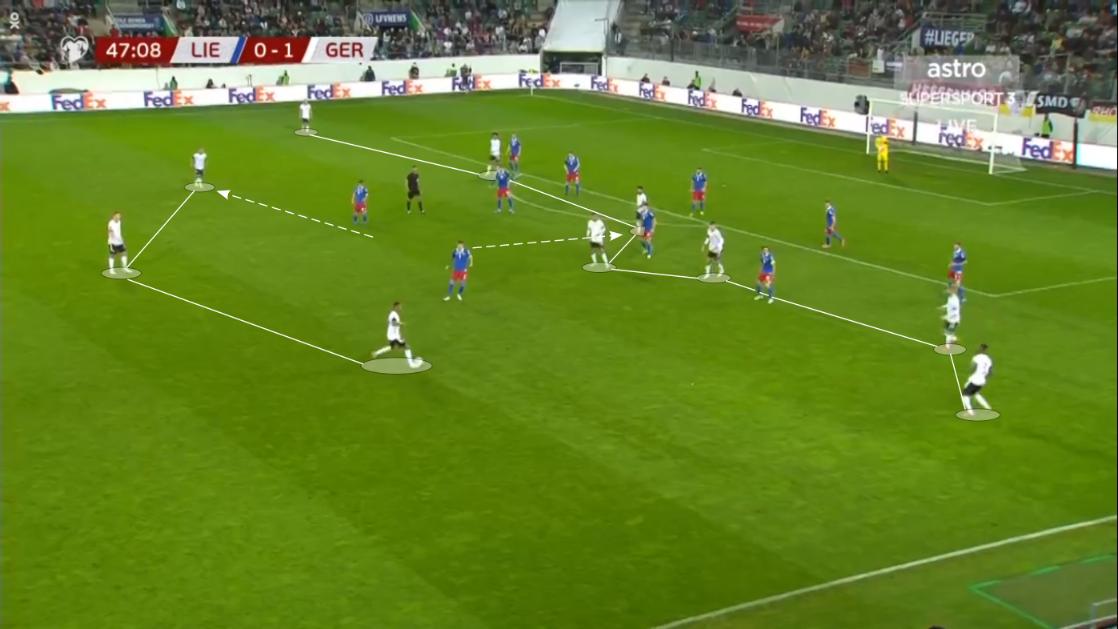
Due to the nature of Liechtenstein’s compact defence, most German moves ended with a cross, which was something that happened a staggering 41 times in the match. Because of their lack of aerial threats in the box, though, only 9 of those were successful.
Unsurprisingly, neither of the two goals came in this way. Both were products of individual brilliance – the first saw Musiala waltz past a couple of defenders before slipping Werner through on goal, while the second came after a slick turn and pinpoint finish on Sané’s part.
Overall, this was hardly a test for Germany because of the massive gulf in quality of the two sides, but there can be no complaints about a comfortable 2-0 victory. Equally, it is important to not rush to any conclusions at all after such a match – a 2-2-6 or 3-7 against most other sides would be ripped apart on the counterattack, and never be used by any sane manager.
Tougher challenges lie ahead for them in group leaders Armenia and Iceland in the next few days, and those matches might give us a slightly better idea of what Flick’s Germany will actually look like.
Stats courtesy FIFA and WhoScored.
From Sportslens.com - Football News | Football Blog
by 208headlines
